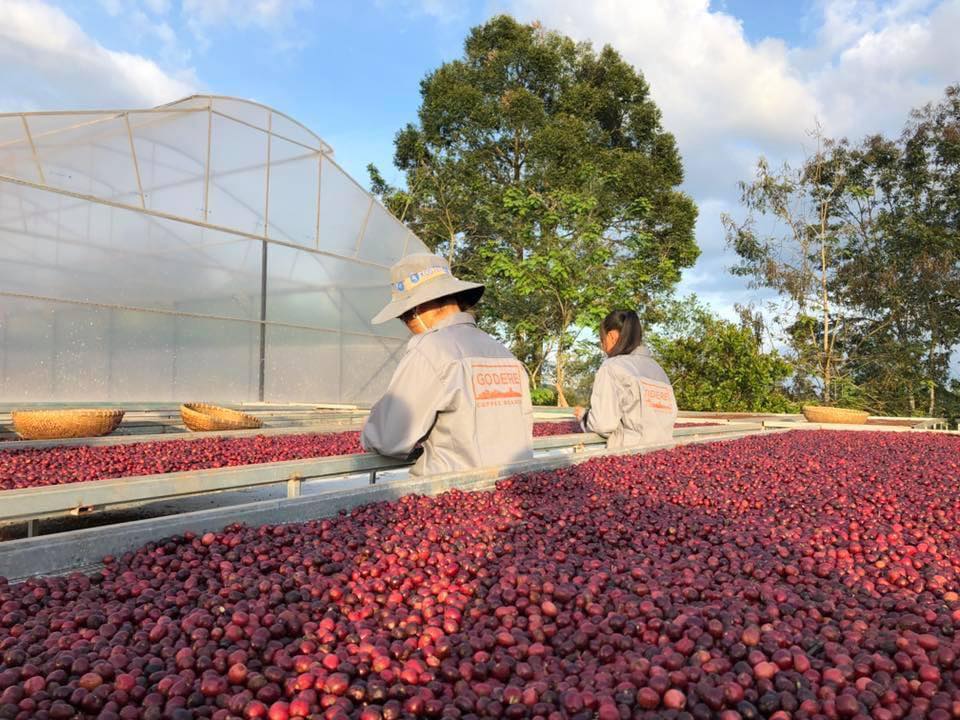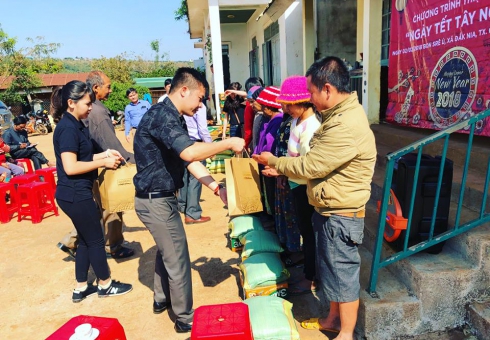Organic Coffee Cultivation Process
Organic coffee is grown and cultivated according to organic standards, without the use of chemical fertilizers, pesticides, or herbicides. It is nurtured using Japanese bio-fertilizers, with no added flavorings, additives, or preservatives. Organic coffee is entirely environmentally friendly and ensures safety for consumers' health.

The organic coffee care process includes the following steps:
- Seed selection: Choose coffee varieties that meet quality standards and have clear, traceable origins.
- Soil preparation and planting holes
The soil must be nutrient-rich, well-drained, and have a cultivation depth of 0.8–1 meter. It should be plowed and enriched with organic fertilizers (well-decomposed manure, green manure).
For sloped land: plant at 3m x 2.5m spacing (about 1,300 trees/hectare).
For flat land: plant at 3m x 3m or 2.8m x 2.8m (around 1,100 trees/hectare). - Planting technique: Place the seedling in the center of the hole, aligning the roots with the ground level. Fill with soil and gently compact it. Water immediately after planting. Windbreak and shade trees should be planted around or between rows during the initial growing phase. Coffee trees thrive in sheltered environments with diffused sunlight.
- Weeding: Weed regularly to eliminate competition for nutrients and water.
- Creating tree basins: Forming basins helps retain water during the dry season and prevent soil erosion during the rainy season.
- Pruning and canopy shaping: Prune to control growth, remove old, weak, diseased branches, and ensure airflow and sunlight penetration.
- Watering: Irrigate based on each growth stage's needs. Avoid overwatering or underwatering.
- Fertilization: Apply fertilizers according to the tree’s developmental stage. Only use organic fertilizers and Japanese bio-fertilizers.
- Pest and disease control: Use sanitation, biological, and organic methods. No chemical herbicides or synthetic pesticides allowed.
- Harvesting and storage: Harvest when cherries are evenly ripe and bright red. Use either dry or wet processing to extract coffee beans. Store beans in a cool, dry place away from direct sunlight.
Organic coffee farming is not easy and requires high investment. To ensure high-quality organic coffee, farmers must comply with strict standards in cultivation, processing, labeling, and quality inspection set by organic certification bodies.
Organic farmers are not allowed to use chemical plant protection agents, synthetic fertilizers, GMOs, or synthetic additives. Instead, they must apply eco-friendly methods such as organic/bio-fertilizers, intercropping, crop rotation, biological pest control, and maintain biodiversity buffers and GMO-free zones.
All of these requirements demand that organic coffee farmers possess substantial knowledge, skills, and a high sense of responsibility. They must also invest significantly in purchasing seedlings, applying fertilizers, pest control, machinery, and equipment, as well as constructing greenhouses, shade structures, and processing facilities. In addition, organic coffee farmers are required to bear the cost of obtaining organic certification and maintaining it through regular inspections conducted by certification bodies. These expenses are by no means small compared to those of conventional coffee farming.
Godere Coffee Roasters is a certified organic coffee brand recognized by both the EU and USDA standards. It is a trusted destination and top choice for those who value delicious, clean, and safe coffee. Come to Godere Coffee Roasters to experience the difference and enjoy the delight in every cup.
Notice: Undefined variable: lgTxt_title_others2 in /home/godere/domains/godere.vn/public_html/modules/temp/show_article.php on line 77











